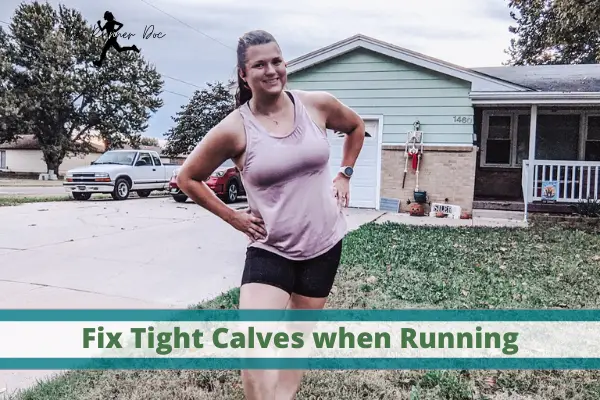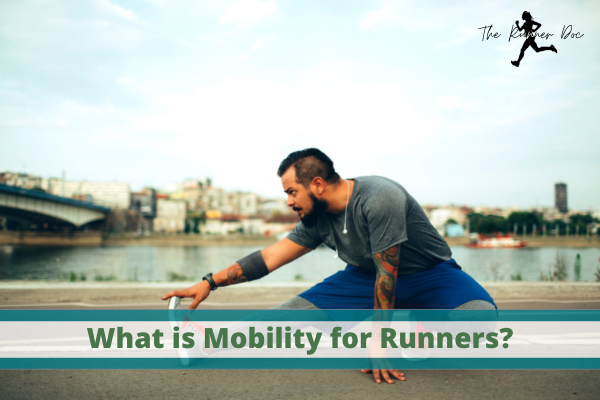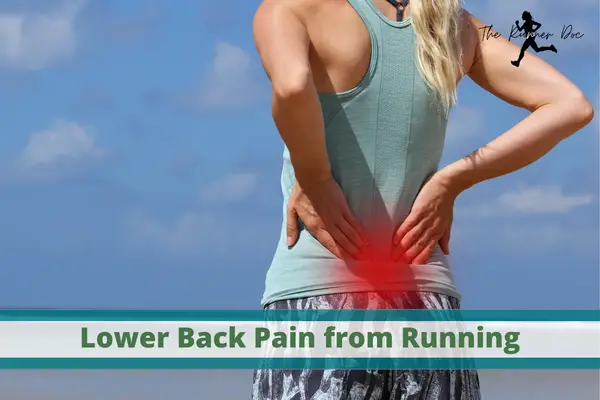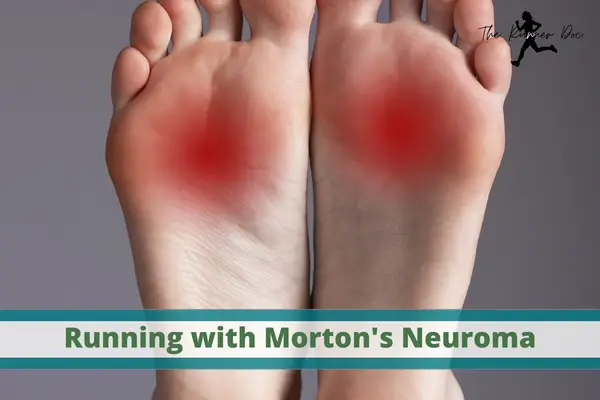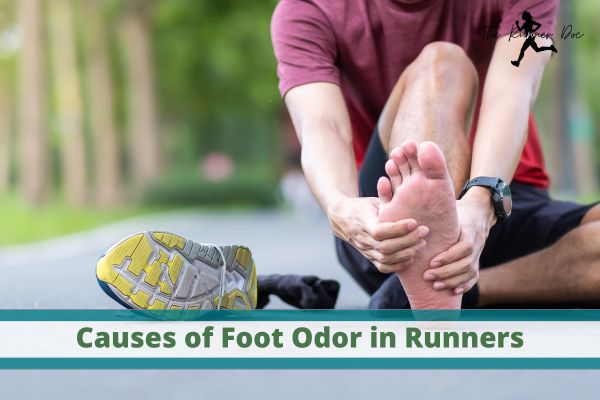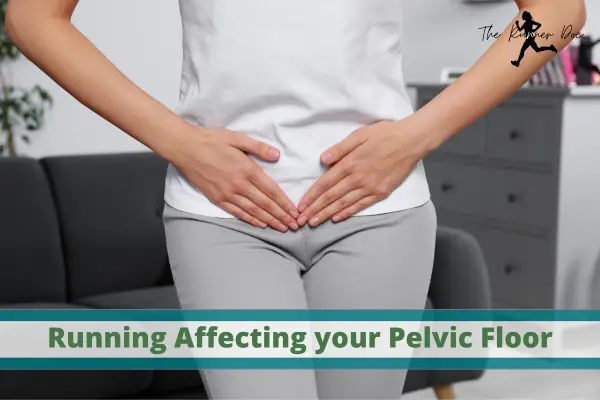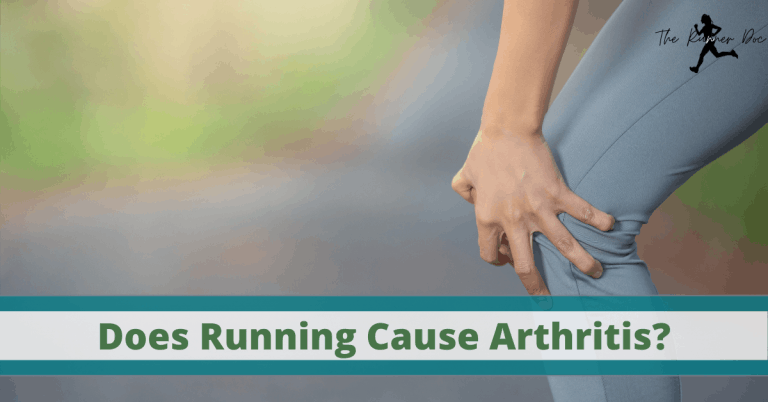Why Are My Calves Tight When Running? (Best Way to Fix Them)
How to Fix Tight Calves When Running
Tight calves can really be a pain. I have experienced them more than once throughout my running career. When I’m deep into training for a half or when I’ve been starting over again and building my running base up tight calves have reared their ugly heads throughout my runs.
I’m not really talking about calves that feel tight for the first 5 minutes or so of your run because you didn’t warm up properly. No, I’m referring to the calves that stay tight even 2-3 miles in.
Today on my run and actually on my last few runs, I’ve been noticing this happening. Which means it is time to work on these calves of mine.
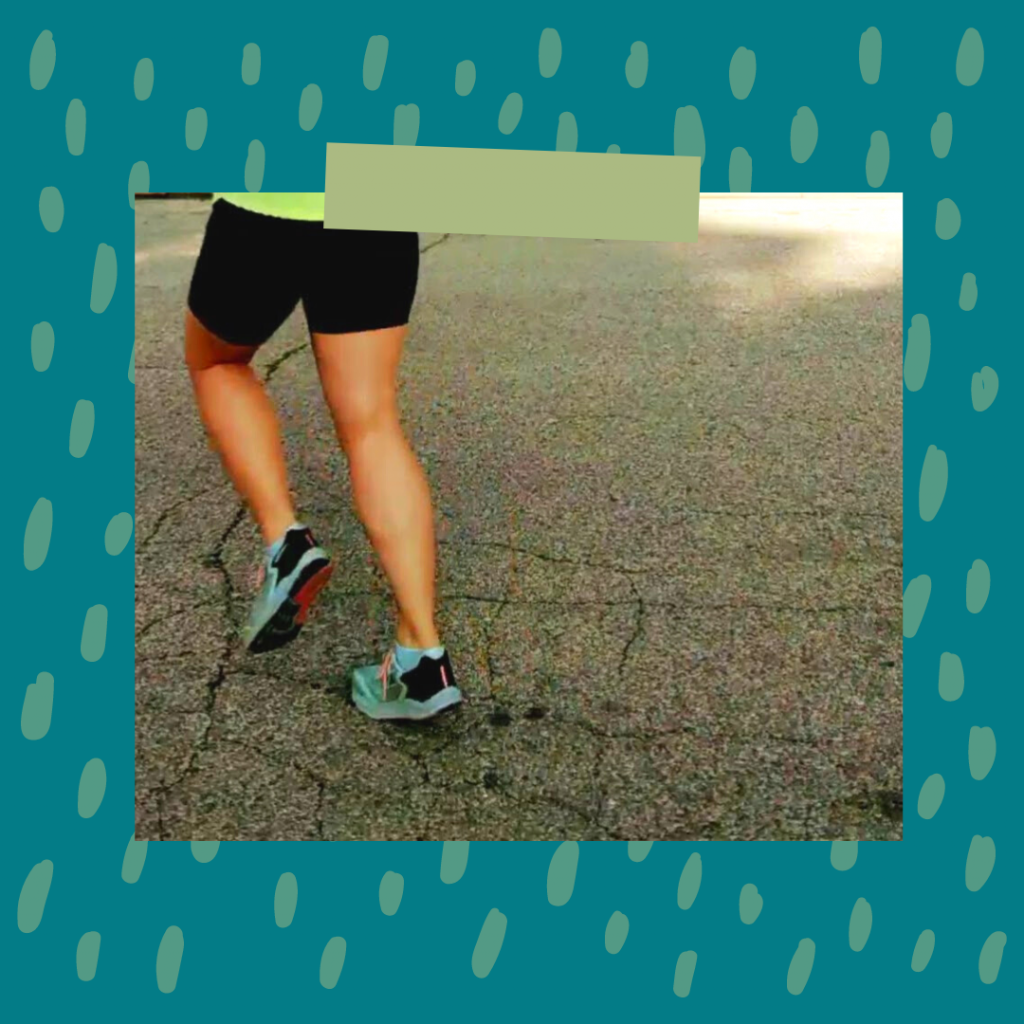
I typically hear runners complain about the following:
- I am stretching my calves all the time, I just don’t get it, they won’t go away.
- I’m using my foam roller all the time, and my calves still feel tight.
- I’m getting regular massage work, and I can’t seem to get on top of it.
There is definitely a pattern in these statements and a critical piece that is missing. Read on to find out how to fix tight calves for good and have that annoying calf tightness go away when you run!
If you are experiencing tight calves while running, it is important to take the time to address the issue. This can be done by implementing some mobility exercises and strength exercises.
What Causes Tight Calves When Running
If you have been stretching your calves over and over and nothing seems to help the tightness. Then maybe length, or flexibility, isn’t the issue.
Well, actually it is, but not in the way you are thinking. When muscles feel too tight they are typically protecting themselves from something. If you have been spending all your time stretching with no results, there is a good possibility that your muscle is TOO long or loose for the demand of running.
If your calves aren’t strong enough, they are going to resist movement (feel tight) in order to protect themselves from the demand (running) you are placing on them.
How to Assess Calf Strength
How do you know if your calf tightness when running is due to strength and not flexibility problems?
Well, first of all, if you are stretching, foam rolling, etc and not having any improvement that would be a big indicator for me. Second, there is a fairly easy way to test your strength.
The easiest way to assess calf strength is with a single calf raise;
- Stand on 1 leg with your fingertips on a wall/ table for balance (not to push up from your calf is doing the work!).
- Push up onto your toes and slowly lower down again
- Do as many as you can (going all the way up, not just lifting your heel!)
- Count the repetitions and compare left and right side
The goal of this test is to be able to do the same amount on each side easily! In the clinic, I aim to have runners hitting 40+ reps on each leg. However, there is no research out there at this time to support this number specifically.
A recent study by Herbert-Losier et al (2017) found the following normals for males & females which I have used as a reference point for this number:
- 20-29yrs: Males 37 reps, Females 30 reps
- 30-39yrs: Males 32, Females 27
- 40-49yrs: Males 28, Females 24
- 50-59yrs: Males 23, Females 21
- 60-69yrs: Males 19, Females, 19
- 70-79yrs: Males 14, Females 16
- 80-89yrs: Males 10, Females 13
You should also ensure that there is no greater than a 10% difference between left and right legs.
Due to this study being the normative values of healthy adults I surmised that runners should be able to do more than this normal number. Since running puts a greater load and strain on the calf musculature I aim for a higher number of reps for my runners.
How to Fix Tight Calves When Running
There are a lot of different ways to strengthen and fix the tightness that you feel in your calves when you run. However, these are what I recommend and regularly prescribe to my patients!
Single-Leg Calf Raise to Fix Calf Tigness When Running
With the same technique as above for the assessment, you will start to strengthen your calves.
- Stand on 1 leg with your fingertips on a wall/ table for balance (not to push up from your calf is doing the work!).
- Push up onto your toes and slowly lower down again
- Do as many as you can (going all the way up, not just lifting your heel!)
- Count the repetitions and compare left and right side
The progression of the single-leg calf raise.
- Start with 3×12 reps doing this 2-3 times per week
- Progress to 3×20 reps
- Then 1×30 continuous reps
- Then 1×50 continuous reps – this is your goal for all runners!!!
Once you are able to do 50 continuous reps on one side you can progress further by adding weight (e.g. dumbbells in one hand or the calf raise rack at the gym)
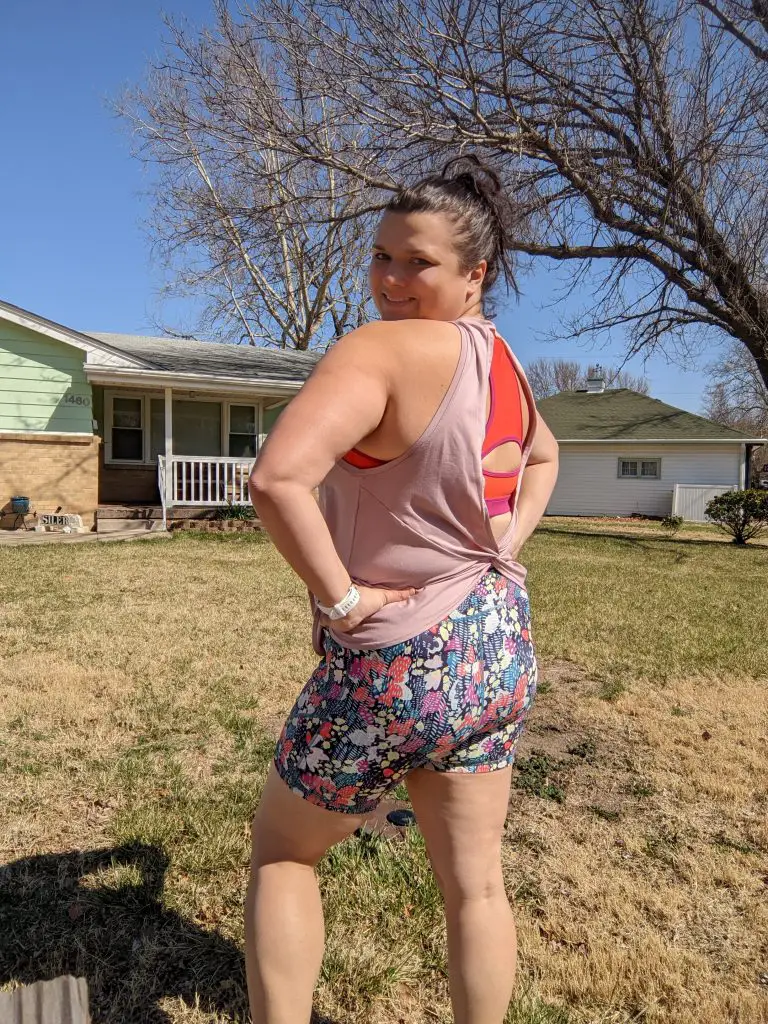
A few key cueing points.
- Be sure to take about 3 seconds per rep for a controlled motion, don’t let momentum fuel you!
- You will want to push through the first and second toes (as opposed to rolling onto the outside of the foot) when raising to contract the muscles correctly.
- As you fatigue you are going to want to start rocking your body forward and backward to generate momentum or even flex (bend) your knee. Try to stay as true to form as possible.
If you start to notice these compensations then stop at that number of repetitions and work up to the higher number.
The exercise can also be done on the edge of a stair to allow for a greater range of movement by letting the heel drop below the level of the step. But don’t do this until you are able to do the standard for at least 25 repetitions correctly!
Soleus Wall Squats for Tight Calves in Runners
A quick anatomy lesson. The calf muscle is actually two different muscles. The Gastrocnemius and Soleus.
When your knee is straight, as with the single-leg calf raise, you are working on the gastrocnemius.
However, we want to have both muscles strong to prevent tightness and fatigue therefore to target the deeper soleus muscle we must bend the knee.
Detailed Instructions of the Soleus Wall Squats: Leaning against a wall sink down into a wall squat position. From there you will lift your heels up off of the ground and hold.
- Start with 30-second holds for 3-4 reps.
- Progress to 45s holds 3-4reps.
- To progress further add weight with dumbbells or a barbell plate resting on your legs.
Final thoughts on Fixing Tight Calves When Running
If you are a runner and are experiencing tight calves, there are exercises that can help to fix the issue. Strengthening the muscles in your calves will help them become more flexible and less tight.
There are many ways to strengthen your calves, but the most effective exercises include single-leg calf raises and soleus wall squats. These exercises can be done at home or at the gym, and they only require a few minutes per day.
Articles Related to How to Strengthen Calves in Runners
Achilles Tendinopathy in Runners
AFFILIATE DISCLOSURE
As an Amazon Associate, I earn from qualifying purchases. This post may contain affiliate links. If you use these links to buy something we may earn a commission. The Site may contain links to affiliate websites, and we receive an affiliate commission for any purchases made by you on the affiliate website using such links.
References for Tight Calves in Runners
Hébert-Losier K, Wessman C, Alricsson M, Svantesson U. Updated reliability and normative values for the standing heel-rise test in healthy adults. Physiotherapy. 2017 Dec;103(4):446-452. doi: 10.1016/j.physio.2017.03.002. Epub 2017 Mar 21. PMID: 28886865.
What causes tight calves when you run
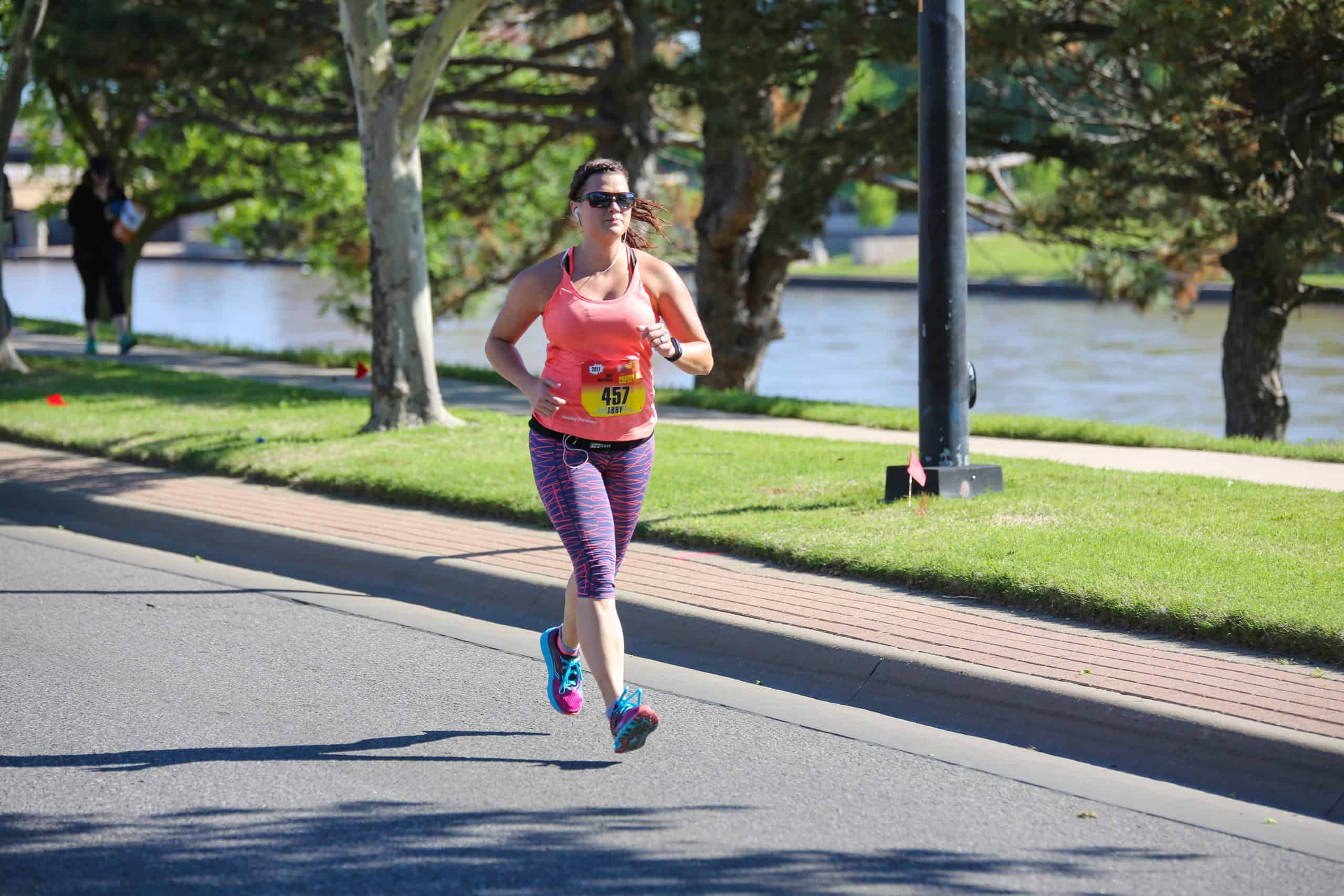
Dr. Abby Siler, PT, DPT is a Physical Therapist with 10 years of experience in a variety of settings. She has spent the majority of her time treating athletes in orthopedic clinics and worker’s compensation cases. She is a runner herself for the past 15 years and a lifelong athlete. Dr. Abby loves to teach runners how to stay injury free and out of her clinic.
